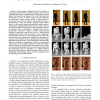52 search results - page 8 / 11 » View-Invariant Representation and Learning of Human Action |
IROS
2009
IEEE
14 years 27 days ago
2009
IEEE
— Programming a humanoid robot to perform an action that takes the robot’s complex dynamics into account is a challenging problem. Traditional approaches typically require high...
ECCV
2004
Springer
14 years 8 months ago
2004
Springer
We introduce a novel approach to modeling the dynamics of human facial motion induced by the action of speech for the purpose of synthesis. We represent the trajectories of a numbe...
NIPS
2008
13 years 7 months ago
2008
Research in animal learning and behavioral neuroscience has distinguished between two forms of action control: a habit-based form, which relies on stored action values, and a goal...
ATAL
2005
Springer
13 years 11 months ago
2005
Springer
Reinforcement learning problems are commonly tackled with temporal difference methods, which use dynamic programming and statistical sampling to estimate the long-term value of ta...
CIVR
2007
Springer
14 years 13 days ago
2007
Springer
This paper addresses the problem of classifying actions performed by a human subject in a video sequence. A representation eigenspace approach based on the visual appearance is us...

